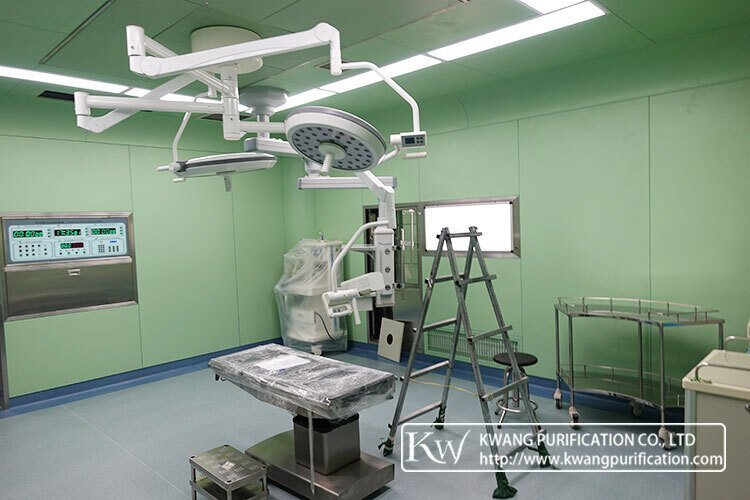Hospital Operating Theater Room: A Critical Environment for Surgical Excellence
- 2024-01-09
- View 10
The hospital operating theater room is a critical space where surgeries and procedures are conducted with precision and care. It provides an environment that meets the stringent requirements of sterility, controlled airflow, and infection prevention. The Hospital operating theater room ensures the safety and well-being of both patients and surgical teams by minimizing the risk of surgical site infections and facilitating efficient surgical procedures.

Hospital Operating Theater Room Design and Layout Considerations
The design and layout of the Hospital operating theater room are meticulously planned to optimize workflow and support surgical teams. Key considerations include:
Space and Size: Sufficient space is allocated to accommodate the surgical team, equipment, and patient. It allows for smooth movement and accessibility during the procedure.
Operating Table and Positioning: The positioning of the operating table is carefully determined to provide surgeons with optimal access to the patient while considering ergonomic principles.
Ergonomic Design: The room's layout considers the comfort and ergonomics of the surgical team, ensuring they can perform procedures with ease and minimal physical strain.
Storage and Equipment Placement: Storage cabinets and equipment placement are strategically organized to provide easy access to surgical instruments and supplies.
Hospital Operating Theater Room Sterile Environment and Infection Control
Maintaining a sterile environment is paramount in the Hospital operating theater room. Stringent infection control measures are implemented, including:
Air Filtration and Ventilation: High-efficiency particulate air (HEPA) filters and controlled airflow systems are utilized to remove airborne particles and maintain a clean environment.
Sterile Draping and Gowns: Surgical teams wear sterile gowns and gloves, and patients are draped in sterile sheets to prevent contamination during the procedure.
Hand Hygiene and Surgical Scrubs: Strict hand hygiene protocols are followed by the surgical team, including thorough handwashing and wearing sterile surgical scrubs.
Cleaning and Disinfection: The Hospital operating theater room undergoes thorough cleaning and disinfection between surgeries to eliminate any potential sources of contamination.
Future Trends in Hospital Operating Theater Room Design
The Hospital Operating Theater Room is poised for further advancements and improvements in the future. Some emerging trends include:
Intelligent Operating Rooms: Integration of artificial intelligence (AI) and machine learning algorithms to support surgical decision-making, automate tasks, and optimize surgical workflows.
Virtual Reality and Augmented Reality: Utilization of virtual reality (VR) and augmented reality (AR) technologies to enhance surgical planning, simulation, and intraoperative guidance.
Infection Control Innovations: Continued advancements in air filtration systems, antimicrobial surfaces, and robotic sterilization technologies to further minimize the risk of surgical site infections.
Wireless Integration and Connectivity: Seamless integration of medical devices, data sharing, and communication systems through wireless technologies for improved connectivity and interoperability.
Conclusion
The hospital operating theater room is a critical and specialized environment that supports surgical excellence. From its design and layout to maintaining a sterile environment and utilizing advanced equipment and technology, every aspect contributes to the success and safety of surgical procedures. With a dedicated and skilled team, adherence to best practices, and embracing future trends, the Hospital operating theater room continues to evolve, advancing patient care and surgical outcomes.
FAQs
Q1: Why is maintaining a sterile environment crucial in the Hospital operating theater room?
A1: Maintaining a sterile environment is essential to prevent surgical site infections and minimize the risk of contamination during surgical procedures. Sterile conditions reduce the chances of postoperative complications and promote faster healing.
Q2: What are some common surgical equipment found in the Hospital operating theater room?
A2: Common surgical equipment includes operating tables, surgical lights, anesthesia machines, surgical instruments (scalpels, forceps, retractors), and imaging technology (X-ray machines, ultrasound).
Q3: What qualifications and roles do Hospital operating theater room staff have?
A3: The Hospital operating theater room staff includes surgeons, anesthesiologists, nurses, surgical technologists, and an operating room manager. Each has specialized qualifications and responsibilities in ensuring the smooth and safe conduct of surgical procedures.
Q4: How are specialized Hospital operating theater rooms different from standard ones?
A4: Specialized Hospital operating theater rooms cater to specific surgical specialties and may have specialized equipment, imaging systems, and layout configurations tailored to the requirements of those specialties.
Q5: What are some emerging trends in Hospital operating theater room design?
A5: Emerging trends include intelligent operating rooms with AI and machine learning integration, virtual reality and augmented reality applications, infection control innovations, and wireless connectivity for improved data sharing and device integration.
Kwang Cleanroom is proud to offer examples of a variety of our cleanroom projects below. Cleanroom Technician, Dust-Free Workshop Company, Cleanroom Supplies, Cleanroom ISO 6, Cleanroom Contractor, Aluminum Honeycomb Cleanroom, Portable Clean Room.
